Bermuda grass, or Cynodon Dactylon, is one of the most well-known types of lawn grass in the USA. You can also know it as couch grass, devil grass, dog-tooth grass, or wiregrass. Anyway, it is beautiful, lush, hardy, and easy to grow which makes it so popular among people.
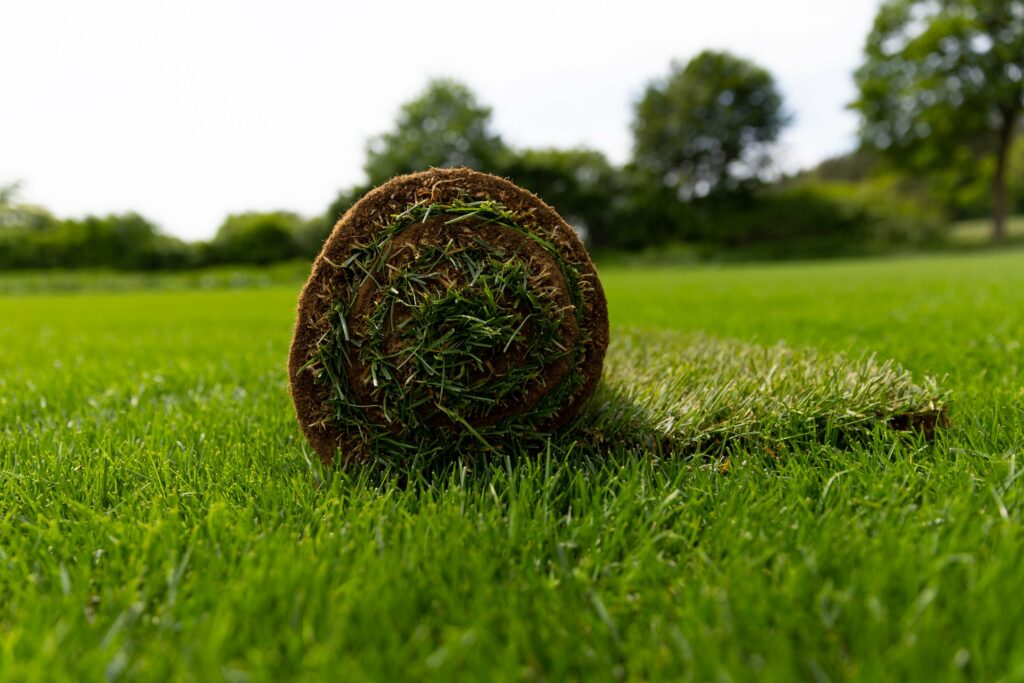
So, when growing it on your pristine lawn, you should know for sure how to get Bermuda grass to spread and grow faster.
How to get Bermuda grass to spread?
Here are smart tips on how to spread Bermuda grass.
1. Growing in late spring
Timing is essential for first growing Bermuda grass. Late spring is the peak growing season for this type of grass.
Like no other season, Bermuda grass spreads and grows very fast.
Never plant Bermuda grass in winter months! As warm-season grass, it needs higher soil temperatures. Cold temperatures stop the grass from growing. If the weather is too frosty, it can even kill it while germinating. However, high heat in summer is harmful to growing grass as well.
Seeding is the best way to grow Bermuda grass fast. Any other methods like sprigging don’t work so efficiently. Besides, it is easy to rake the seeds into the soil and then water them properly.
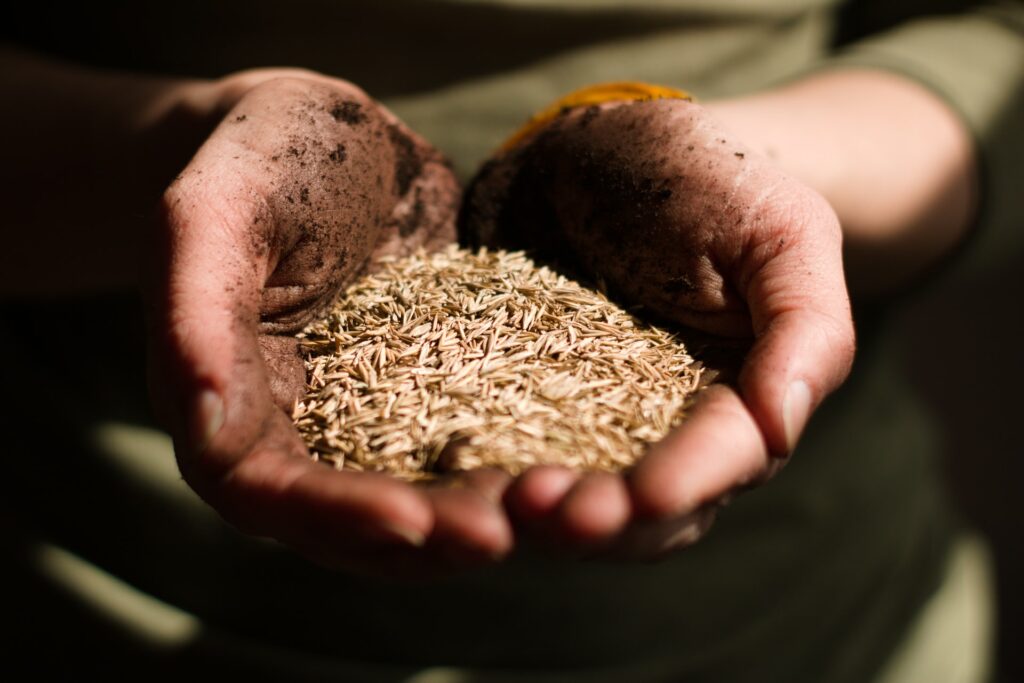
2. Generous watering
As originated from Africa, Bermuda grass is considered to be drought tolerant. However, watering is important to get Bermuda grass to spread. So, how much water does it need to grow and spread faster?
Water Bermuda grass daily for about 5 or 10 minutes. If the weather is hot and dry, increase the watering time to 30 or 45 minutes. But never do this in rain periods, as it causes standing water on your grass lawn.
The best way is to settle a sprinkling system in your yard. But if you can’t, water your Bermuda grass with the hose. Proper watering encourages the grass to spread and grow thicker. Moreover, frequent watering helps it to come back after mowing.
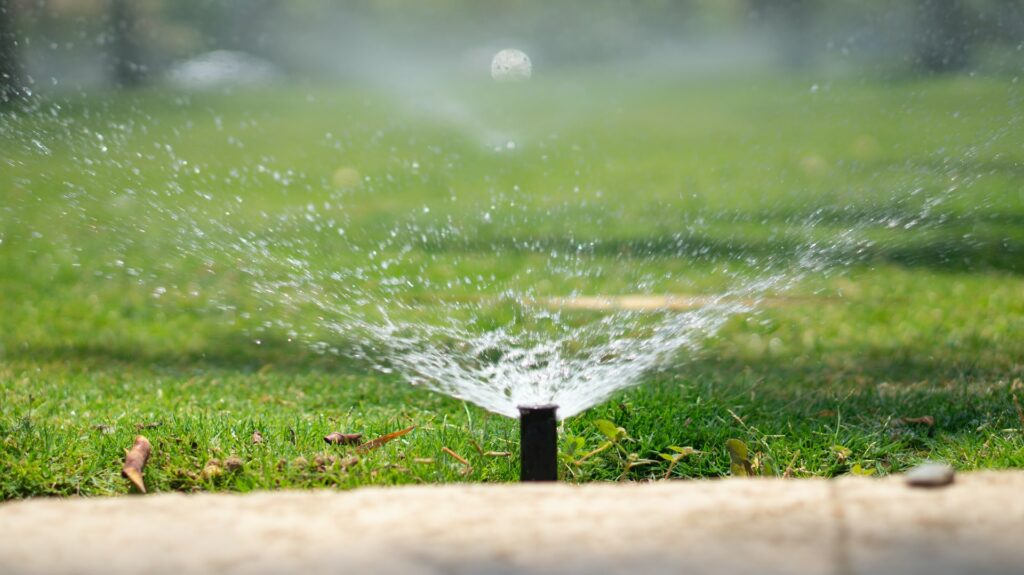
One more way to promote the Bermuda grass spread faster is deep watering. For that, water Bermuda grass for 1-2 inches weekly in the morning. In hot weather, overwatering prevents evaporation during the day. You can find out more information when best times to water grass seed.
3. Providing with sunlight
Like any other plant, Bermuda grass needs enough sunlight to grow and stay healthy. The process of photosynthesis is impossible without sunlight. So, lack of sun makes Bermuda grass thin out, fade and die.
Full sun is the best option for the Bermuda grass. But what if your yard is situated in a shaded area?
To provide your Bermuda grass with more sun, mow it shorter. Thus, it reduces blocking out the light from the rest of the grass.

4. Frequent mowing
As for mowing, Bermuda needs it regularly to be healthy and spread quickly.
A good rule of thumb is to mow every three weeks during the growing season. Cut the grass down by no more than one-third of the whole length each time.
Don’t cut it too much, as your lawn turns poor and patchy. However, leaving the grass too long, you can make your lawn thin out as well.
Never mow when the sprouts are too young, or else they never recover. When they reach at least 2 inches long vertically, it is the optimal height for the first mowing. It means their root fixation is already strong enough, and now it is safe to mow.
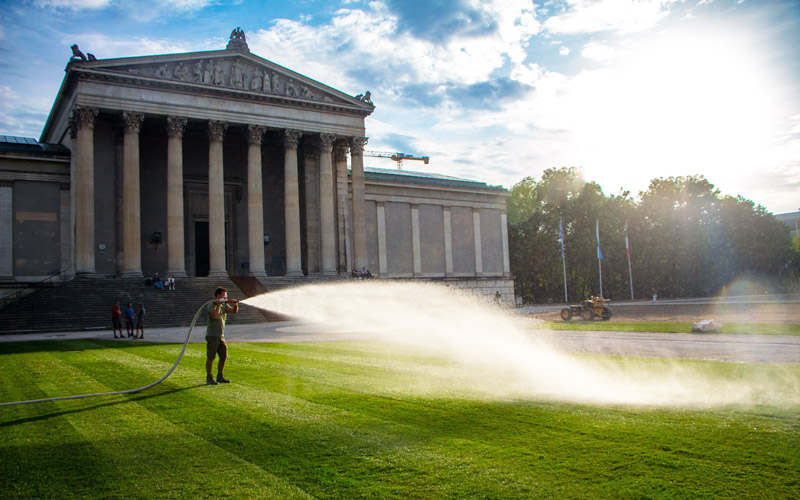
5. Take care of the soil
One of the most frequent problems is poor soil. You can’t make Bermuda grass spread faster if lacks of nutrients are in your soil. In addition, some soil types are wrong for the Bermuda grass lawn.
Check your soil type and quality in early spring. If there are some troubles, consider the soil amendments for lawn care.
The soil amendments include a complex of extra steps. If the soil is poor and sandy, add some organic materials. You can also mix the compost with the Bermuda grass seeds before planting on the lawn. After germination, apply fertilizers to make the Bermuda grass grow and spread better.
To improve the growth conditions of the lawn soil, keep the right balance of the soil pH and provide it with enough aeration.
One more good idea for healthy lawn care is mulching. It can help you to kill several birds with one stone. Mulching the Bermuda grass lawn keeps moisture in the ground, so the entire lawn looks green and healthy. Besides, mulch prevents excessive weeds from spreading on the lawn and choking your Bermuda grass seed.
If the soil type is wrong, consider changing it. Clogged and compacted soil is incompatible with growing Bermuda grass. Look for other types of soil with enough drainage and fewer compaction issues. Anyway, your soil must be neutral-alkaline. The ideal soil’s pH level is between 5.8 and 7.0.
6. Opt for nitrogen fertilizer
Encourage your Bermudagrass growth by adding nitrogen fertilizer. Apply it every three weeks within the growing season. It takes time for the nutrients in the fertilizer to work into your lawn. So, the visible results can appear no less than in about three weeks.
7. Keep an eye for the weeds
In general, lush Bermuda grass lawns are capable to choke out weeds. But weeds can easily turn into big trouble if you grow lots of other plants on the lawn. All the weeds are prone to spread fast and thick, so they can finally choke out your Bermuda grass.
Control the plant balance on your lawn and don’t forget to remove extra weeds regularly.
Bermuda grass: To grow or not to grow?
When choosing between many types of grass, many lawn owners stop on the Bermuda grass. And that is a good point for some essential reasons. However, Bermuda grass has several cons against the obvious pros. So, here are the most essential points for and against growing it.
Points for:
- Fits best for full-sun growing
- A high level of drought tolerance
- Tough and enduring
- Looks perfect in the proper conditions
- A good weed-killer
Points against:
- Bad with low temperatures, turns brown in winter
- Needs the most nitrogen fertilizer in summer to be thick and green
- May spread to the flowerbeds and choke the plants
- Goes dormant with lack of water in drought season
How does Bermuda grass spread?
When growing, Bermuda grass produces stolons and rhizomes. These two are the main and fastest natural ways of its spread. Meanwhile, it can also produce seeds, although this is the less efficient natural method of spread.
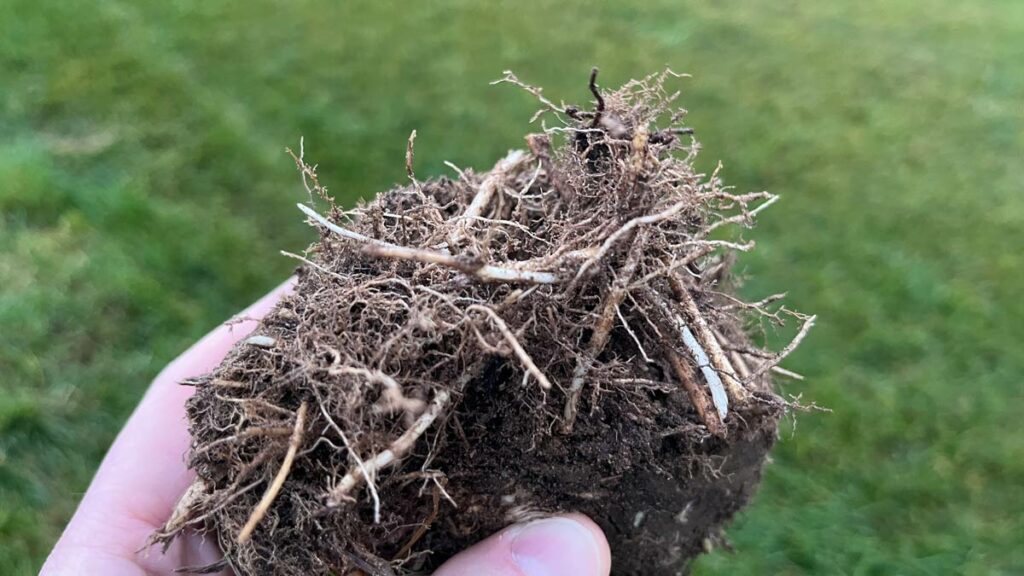
Stolons
Stolons are root-like protrusions that spread below and parallel to the ground. Each stolon produces 3-4 grass clippings. Besides, they can produce new root clumps under the ground, which allows each plant to survive in case of stolon damage.
Rhizomes
Rhizomes are the upper counterparts of the stolons. Although they spread above the ground, rhizomes are root-focused parts of the plants. They don’t produce new grass clippings, instead, they form new stolons, root growth, and grass just above them.
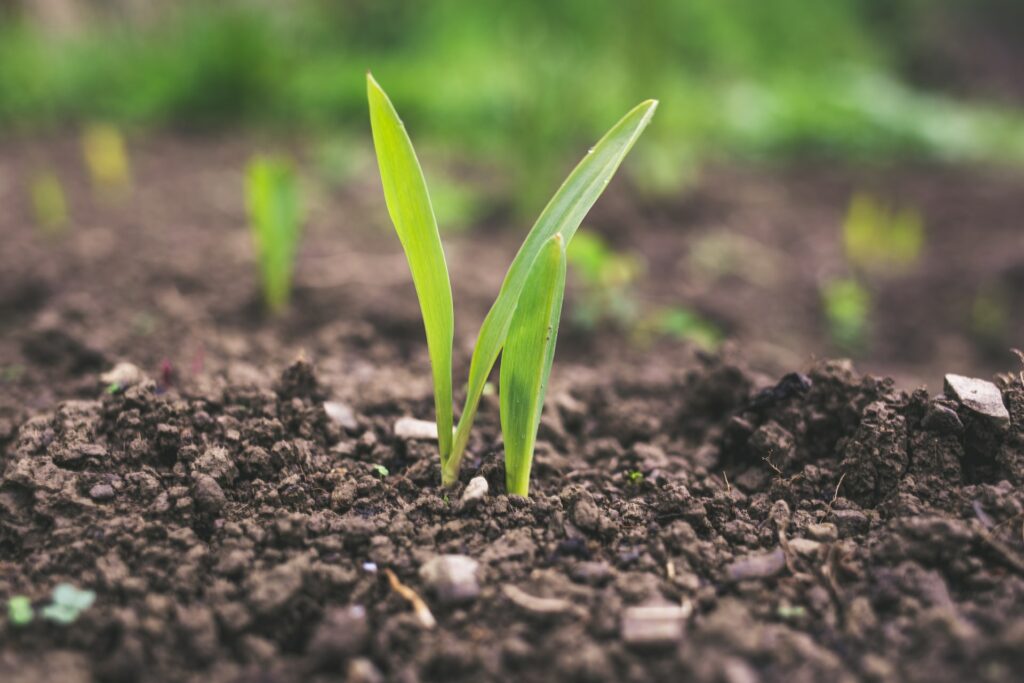
Seeds
If you want to spread Bermuda grass by seeding your new lawn, remember that is the last way to use it. Seeded Bermuda grass grows, establishes, and spreads very slowly. But if you choose this way to make Bermuda grass spread on the established lawn, it is not a bad idea. Just wait until the grass matures to produce seeds.
On average, the Bermuda grass should be no less than 12 inches tall to be mature enough. It takes about 6 weeks or more. Keep in mind that you can’t mow the Bermuda grass lawn if you expect it to produce seed heads!
How long does it take for Bermuda to spread?
The Bermuda grass spread has a different growth rate. It mostly depends on the spread methods you use. In general, Bermuda grass has quite an aggressive growth rate. On the one hand, sometimes that makes it hard to control and handle properly. On the other hand, it is a great point for fast recovery after damage.
As Bermuda grass is highly-resistant to wear and tear, it is a good choice for sports grounds, like golf courses, football, or athletic fields. However, the lack of vital resources makes it spread and recover much slower. So, to keep at least the current number of plants alive, Bermuda grass needs enough vital resources. If there are some extra resources, they can spread.
The germination period for newly seeded lawns usually takes from 7 to 14 days. A fully established green covering forms between 60 and 90 days.
In the most optimal conditions, increased spread of Bermuda grass from stolons or rhizomes takes about 1/2″ a day. When spread with seed, it takes about 12 weeks until the Bermuda roots are established and start forming and spreading stolons and rhizomes.
Will Bermuda grass fill in bare spots?
There are lots of causes for the brown spots on your Bermuda lawn, including drought, poor soil, lack of fertilizer, unbalanced soil pH, pests, diseases, and your dog’s activity as well. Bare spots make your lawn patchy and sloppy.
In general, it is possible to fill in bald spots on your Bermuda grass lawn. You can also read more about gardening and how to take care of your yard.
First of all, make sure that the soil on your lawn is healthy. Don’t forget that good drainage is an important point. If the soil is poor, add some manure or compost to the ground in a bare spot. Proper soil conditions improve the growth of seeds.
Now you can plant the Bermuda grass seeds. Water the soil properly, or just do it after a good rain. Place the seeds about 1/2 inch into the soil. Rake them over evenly using a lawn roller. Keep the seeded ground moist for better germination.
One more good point is to plant Bermuda sod. It is a hybrid grass with improved qualities that can instantly cover a bald lawn patch. Bermuda sod has faster root growth and creates a thick, deep-green covering on your lawn.
Are you searching for the fastest way to cover bald spots? Just seed the new sod and wait for 2 or 3 weeks to see the results.
Bermuda sods take root in the lawn faster and produce lush and dense green coverage.
You can also plant plugs or sprigs as it is the fastest way to fill in bare spots.
Consider timing, as the seeds should be planted at the right season. The best period for this is between late summer and early fall, in moderate temperatures.
Does sand help Bermuda spread?
Generally, Bermuda grass grows on almost all types of soil. That is an important bonus to its popularity. However, if the soil on your lawn is too sandy, it means a lack of nutrients and moisture for the Bermuda grass spread.
So, for better and faster plant growth, it is better to amend your sandy soil or even change it for more compatible types.
FAQ
How long does Bermuda take to spread?
The germination period for newly seeded lawns usually takes from 7 to 14 days. A fully established green covering forms between 60 and 90 days. In the most optimal conditions, increased spread of Bermuda grass from stolons or rhizomes takes about 1/2″ a day. When spread with seed, it takes about 12 weeks until the Bermuda roots are established and start forming and spreading stolons and rhizomes.
How do you make Bermuda grass thicker?
In order for Bermuda grass to grow densely, you must water it abundantly, ensure that there is enough light, mow the grass often, take care of the soil, apply nitrogen fertilizers and monitor weeds.
How can I make my grass spread faster?
In order for Bermuda grass to spread quickly, it is recommended to sow it in places where there is a sufficient amount of sunlight. you must also ensure regular abundant watering and regular mowing for the lawn.
Does sand help Bermuda spread?
If the soil on your lawn is too sandy, it means a lack of nutrients and moisture for the Bermuda grass spread. So, for better and faster plant growth, it is better to amend your sandy soil or even change it for more compatible types.
Will Bermuda spread to bare spots?
It is possible to fill in bald spots on your Bermuda grass lawn. You can sow Bermuda grass seeds or plant Bermuda turf. You can also plant plugs or sprigs as it is the fastest way to fill in bare spots.
What is the best month to plant Bermuda grass seed?
Timing is essential for first growing Bermuda grass. Late spring is the peak growing season for this type of grass. Like no other season, Bermuda grass spreads and grows very fast.
Final word
When talking about how to make Bermuda grass spread, remember that the growth speed depends on many factors. However, most of them are under your control.
Keep in mind that you must take proper care of your lawn. Provide it with enough sunlight, improve the soil conditions, apply a good fertilizer, and don’t forget about weed prevention.
Follow these points, become a caring gardener, and make your Bermuda grass spread thick and fast!

